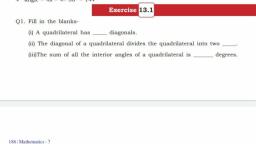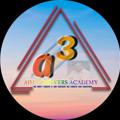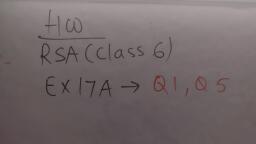Question 1 :
A has a pair of triangles with corresponding sides proportional, and B has a pair of pentagons with corresponding sides proportional.<br>$S_1\equiv$A's triangles must be similar<br>$S_2\equiv$ B's pentagons must be similar<br>Which of the following statement is correct?
Question 2 :
If two sides of a parallelogram are $6$ and $8$ and one diagonal is $7$, what is the length of the other diagonal?
Question 3 :
The two diagonals of a rhombus are $24$ cm and $10$ cm long. The length of each side of the rhombus is
Question 4 :
$ABCD$ is a parallelogram $P$ is a point on $AB$ such that $AP : PB = 3 : 2$. $Q$ is a point on $CD$ such that $CQ : QD = 7 : 3$. If $PQ$ meets $AC$ at $R$, then $AR : AC$ is
Question 5 :
$T_{m} $denotes the number of Triangles that can be formed with the vertices of a regular polygon of $m$ sides. If $T_{m+1}-T_{m}=15, $then $m=$<br><br>
Question 6 :
A school was having 4 Hexagonal buildings joined to each other. They wanted to utilize the space between the 4 buildings to make a playground. The shape is that of a parallelogram. Can you find the measure of the angles as opposite angles are equal?
Question 7 :
Let ABCD be a parallelogram such that AB = q , AB = p, and $\angle BAD $ be an acute angle. If r is the vector that coincides with the altitude directed from the vertex B to the side AD, then r is given by
Question 8 :
The number of sides in a polygon of equal distance whose one interior angle is 108 will be
Question 9 :
If $(3, -4)$ and $(-6, 5)$ are the extremities of a diagonal of a parallelogram and $(2, 1)$ is its third vertex , then its forth vertex is
Question 10 :
The point of intersection of the diagonals of a quadrilateral divides one diagonal in theratio $1 : 2 .$ Can it be a parallelogram?
Question 11 :
If $\vec{a}$ and $\vec{b}$ are adjacent side of parallelogram , then $|\vec{a} + \vec{b}| = |\vec{a} - \vec{b}|$ is necessary and sufficient condition for a parallelogram to be a
Question 12 :
ABCD is a square with side a. With centres A, B, C and D four circles are drawn such that each circle touches externally two of the remaining three circles. Let $\delta$ be the area of the region in the interior of the square and exterior of the circles. Then the maximum value of $\delta$ is
Question 14 :
A cross section at the midpoint of the middle piece of a human sperm will show
Question 15 :
Let ABCD be a parallelogram such that AB = q , AB = p, and $\angle BAD $ be an acute angle. If r is the vector that coincides with the altitude directed from the vertex B to the side AD, then r is given by
































